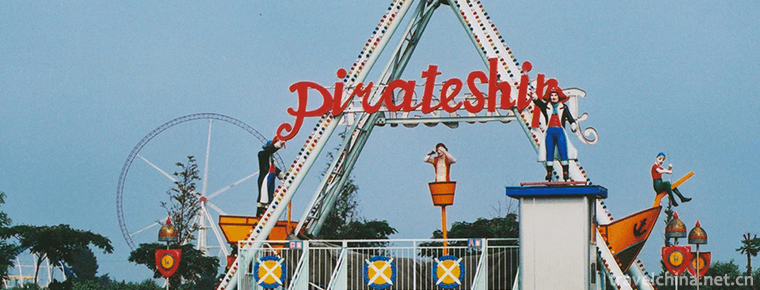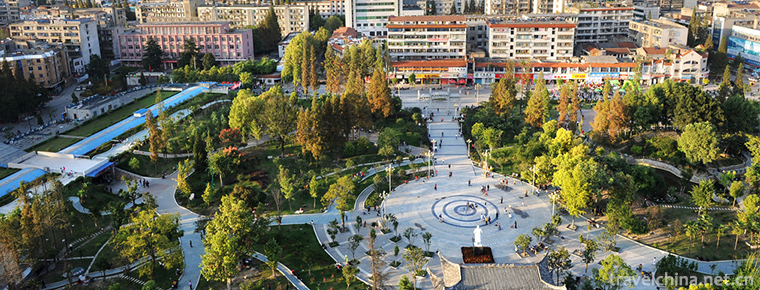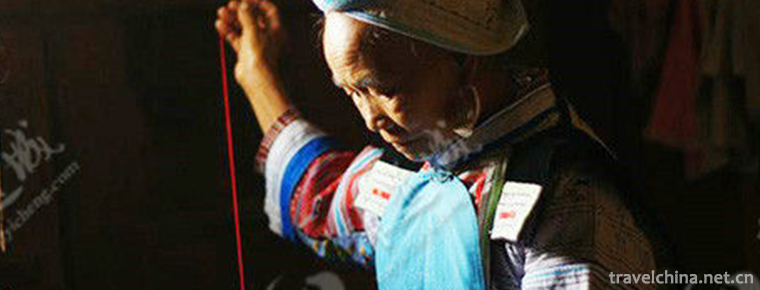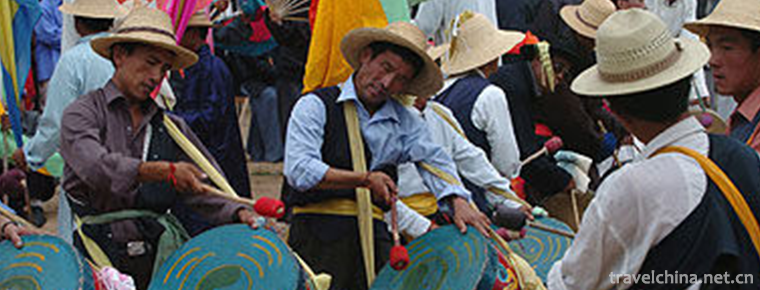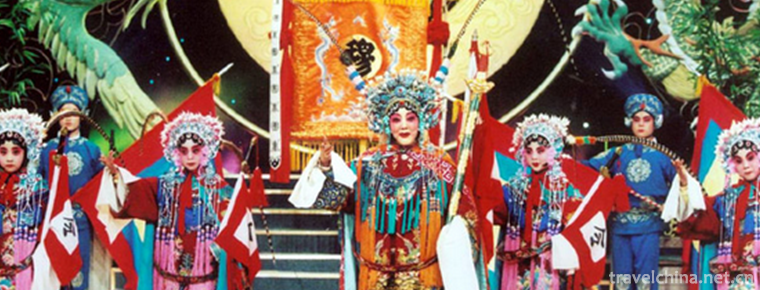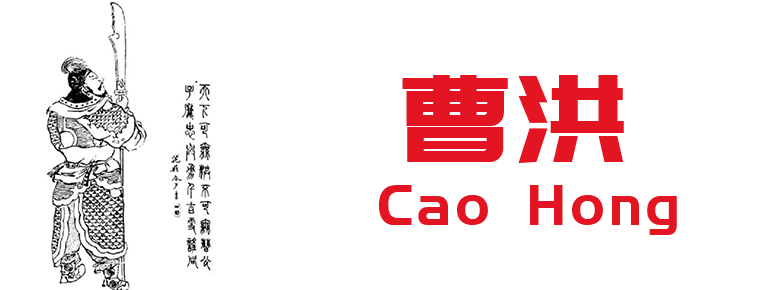Nuo opera
Nuo opera
Nuo opera, a kind of Chinese opera, is a form of opera formed by drawing on folk songs, dances and dramas on the basis of folk sacrificial rites.
Nuo Opera originated from Fang Xiangshi's exorcism activities in Shang and Zhou Dynasties. After Han Dynasty, it gradually developed into a ritual ceremony with strong entertaining color and opera music components. Around the Song Dynasty, Nuo Yi, influenced by folk songs, dances and dramas, began to evolve into a Nuo opera aiming at rewarding God's wishes.
Nuo opera is a combination of history, folklore, folk religion and primitive drama. It is widely used in Anhui, Jiangxi, Hubei, Hunan, Sichuan, Guizhou, Shaanxi, Hebei and other provinces. Nuo Opera has different names in different nationalities and regions, such as Nuo Tang Opera, Duan Gong Opera, Teacher Tao Opera, Dao Zi Opera, Local Opera and Guan Suo Opera.
Nuo opera takes mask as its important means of artistic modeling, and its content is mostly related to religious ghosts and gods; Nuo opera performers wear painted masks according to their roles, commonly known as "face", and are classified as "one not, two clean, three born, four born, five ugly, six foreign, seven pasted and eight born"; their performances are commonly known as "jumping nuo", and the scenes are often accompanied by gongs and drums. The representative plays include Catching Yellow Ghost, Liu Wenlong Catching Examinations, Meng Jiangnu, Zhang Wenxian, Chenzhou Food Feeding, Xue Rengui's Expedition to the East, Ponzi Daughter, Dragon King's Daughter, Taoyuan Dongshen, Liangshan Land, and so on. In addition, there are also some plays based on the stories of Mulian Zhuan, Romance of the Three Kingdoms and Journey to the West.
From 2006 to 2014, Nuo Opera (Wuan Nuo Opera, Chizhou Nuo Opera, Dong Nuo Opera, Chizhou Nuo Opera, Dong Nuo Opera, Dong Nuo Opera, Chenzzhou Nuo Opera, Dejiang Nuo Hall Opera, million million-year-old open-mouth Nuo, GeGelao Nuo Opera, Hefeng Nuo Opera, Enshi Nuo Opera, Enshi Nuo Opera, Renzhuangfanfanfanfanfangugu Nuo Opera, Dean Pangong Gong Opera, Dean Pan Gonggong Opera, Dean Pan Gonggong Opera, Dean Pan Gonggong Opera, Nushan Mountain Nuo Opera, Nuo Opera, Libo Meishan Mountain Nuo Yizu Nuo Opera Linwu Nuo Opera and Qingtan Opera have been listed as the representative of national intangible cultural heritage. List of projects.
A Brief History of Plays
Background
Nuo, the ancient book is interpreted as exorcising ghosts and epidemics. Nuo dance is a kind of dance in ancient sacrificial rites. Nuo opera is a form of drama developed on the basis of Nuo dance.
Nuo Opera, known as the "living fossil of Chinese drama", is one of the oldest cultures in China. It has unique aesthetic value and implication. "The world Nuo Opera is in China, the Chinese Nuo Opera is in Guizhou, and the Guizhou Nuo Opera is in Dejiang."
Nuo sacrifice originated from totem worship in primitive society. In Shang Dynasty, a fixed ritual was formed to drive away ghosts and epidemics. It was called Nuo in Zhou Dynasty. Since the Shang and Zhou Dynasties in ancient China, sacrifice to gods has been regarded as an important activity. Ancient totem worship and belief in ghosts and gods are the simplest expression of the people's desire to expel suffering and pursue a happy life. The state should offer sacrifices and the people should also offer sacrifices. For example, the sun, the moon and the stars, the wind teacher and the rain teacher, the five mountains and forests, and the God society should be offered sacrifices. One of the ways of this kind of sacrifice is called Nuo, and there are Dao in the country and Nuo in the countryside among the people. In the ritual of sacrifice, there must be dance and song, which is also called Nuo dance. Nuo has been developing and changing among the people, gradually adding story plots to songs and dances, enriching performances and transforming them into Nuo Opera. And this Nuo opera is the most primitive one.
developing process
Nuo ritual has gradually developed from the solemn sacrifice ordered by the Son of Heaven to the folk, and has gone through three stages: epidemic-driven, god-rewarding and secularization. During the Han and Wei Dynasties, Nuo activities became more and more grand. Fang Xiangshi in the ceremony increased to four, with 12 Huangmen disciples and God beasts, 120 squires, and thousands of other actors dressed as various gods. With the rise of Taoism and the introduction of Buddhism into China at the end of Han Dynasty, Nuo changed to exorcise ghosts and exorcise epidemics to reward God Naji. The protagonist Fang Xiangshi gave way to the Buddhist gods such as the dragon, the white tiger and the Vajrayana and the mighty warrior. After the secularization of religion, its function changed to reward gods for entertainment, and the traditional inviolable gods changed into gods and Nuo mothers; then into kitchen gods and kitchen mothers; in the late Tang Dynasty, even beggars joined the ranks of Nuo rituals. To the Song Dynasty, the mysterious religious color gradually faded, while the customs of the real society filled with Nuo rituals. From New Year's Day to Lantern Festival, the peasant households wore masks, red clothes, the party and the masses, all night long, and sought wine and food, the scene was very spectacular.
After the Tang and Song Dynasties, with the spread of Nuo activities, a large number of Confucian, Taoist and Buddhist cultures were integrated into the belief in ghosts and gods to drive away ghosts and epidemics. Many myths and folk legends were borrowed, and many historical stories and war themes were interlaced, showing strong folk traditional cultural characteristics. Nuo dramas such as "Lanling King" and "Mulian Jiumu" had been prolonged. It has been handed down to this day. Around the Yuan and Ming Dynasties, Nuo Opera was transformed into Nuo Opera.
At the initial stage of the formation of Nuo Opera, like the emergence of opera, it was also widely accepted as a new cultural phenomenon. Because it meets the psychological needs of the people, the channels of communication are also wide, and the social effects are obvious. At the end of Ming Dynasty and the beginning of Qing Dynasty, various local operas flourished. Nuo dance absorbed the form of opera and developed into Nuo opera. Except for a few places, most parts of the country are very popular. Later, it was introduced to some remote areas, especially the remote and backward areas with strong witchcraft atmosphere. After absorbing and utilizing by the local people, it finally became a custom and became one of the many folk cultures in China.
After the Nuo Opera was formed in Western Hunan in the reign of Kangxi, it entered the Yangtze River from Yuanshui and developed rapidly to various places, forming different schools and artistic styles. Nuo Opera is popular in Sichuan, Guizhou, Guichi, Qingyang and western mountainous areas of Hubei. Nuotang Opera in Hunan and Hubei absorbs the advantages of Huagu Opera, Nuo Opera in Sichuan and Guizhou absorbs the artistic elements of flower lanterns, while Nuo Opera in Jiangxi and Anhui absorbs the advantages of Hui Opera and Goal Lian Opera. Later Nuo Opera gradually developed into a kind of entertaining folk dance. Different regions have different names, also known as ghost dance, Nuo dancing, and so on. It is also known as Dancing God. With the continuous progress of society and the continuous improvement of civilization, human beings have gradually deepened their understanding of nature. People's religious consciousness decreases correspondingly, while the atmosphere of entertaining celebrations increases day by day. Eventually, the religious elements will disappear completely and become pure entertaining and entertaining drama.
Since liberation, Nuo culture has been destroyed because of the abolition of feudal superstition, and it has been reserved only in some remote and backward mountain areas. In the 1960s and 1980s, Nuo Opera was once banned.
Present situation
After the reform and opening up, Nuo Opera has attracted the attention of academia and become a new discipline with ancient connotations. A large number of research and narrative achievements have emerged rapidly in the past 20 years. Some provinces have also published such chronicles as Hunan Nuo Opera Chronicle and Sichuan Nuo Opera Chronicle according to the compilation style of Chinese Opera Chronicle. The achievements are very rich and lay a foundation for the construction of Nuo Culture discipline in the future. A solid foundation has been laid. However, due to the relative concentration of data excavation and completion time, there are inevitably omissions in data collation, identification, sorting, classification, and relatively weak in basic theoretical research. According to the standard of constructing a discipline of history and culture, the existing research on Nuo culture in our country presents a situation of flourishing branches and leaves and uneven backbone, which needs to be improved and strengthened. In addition, the traditional performances of Nuo Opera have become rare. Most of the performances of Nuo Opera have departed from sacrificial rituals and evolved into dances or folk shows in folk activities and tourism programs. Their sacrificial nature has gradually weakened and replaced by exhibition.
In the 21st century, the state pays more attention to the excavation, rescue, protection and research of Nuo culture. Many Nuo cultural projects have entered the national and provincial non-legacy list. On May 20, 2006, Nuo Opera (Wu'an Nuo Opera, Chizhou Nuo Opera, Dong Nuo Opera, Yuanling Chenzhou Nuo Opera and Dejiang Nuotang Opera) was listed in the first batch of national intangible cultural heritage list with the approval of the State Council. On June 7, 2008, Nuo Opera (Wanzai Opening Nuo, Gelao Nuo Opera, Hefeng Nuo Opera and Enshi Nuo Opera) was listed in the first batch of national intangible cultural heritage expansion projects. On May 23, 2011, Nuo Opera (Renzhuang Fangu Nuo Opera, De'an Pan Gong Opera, Meishan Nuo Opera, Libo Buyi Nuo Opera) was listed in the third national intangible cultural heritage list. On November 11, 2014, Nuo Opera (Linwu Nuo Opera and Qingtan Opera) was listed in the fourth batch of national representative projects of intangible cultural heritage.
Distribution area
In ancient times, Nuo sacrifice and Nuo opera were very popular. They were popular in southwest China, Yangtze River Basin, Yellow River Basin and Nenjiang River Basin. However, with the development of society and the evolution of culture, Nuo Festival and Nuo Opera are declining in the Nenjiang River Basin, the Yellow River Basin and the middle and lower reaches of the Yangtze River. However, in the remote southwest, especially in the minority areas, the closed social environment and the unique cultural personality of the minority nationalities formed by long-term traffic congestion, backward science and technology and low productivity, as well as the tragic penetration of the Central Plains culture, Jingchu culture and Bashu culture, provide fertile soil for the survival and development of Nuo sacrifice and Nuo opera. In that information-blocked cultural environment, the pace of social evolution was slow, and the witchcraft culture in the border area was conservative and developed, which made the development of Nuo sacrifice to Nuo opera immersed in the regional cultural environment with a strong witchcraft atmosphere for a long time, and it grew and was deeply rooted, which led to the evolution speed of Nuo sacrifice to Nuo opera synchronized with the local society, and retained a considerable part of it. Religious factors. The vast area centered on Guizhou, including Guizhou Province, Dongdu of Yunnan, southern Sichuan, southern Chongqing, southwestern Hubei, western and southwestern Hunan, northern Guangxi and southern Anhui, is still a popular area for Nuo sacrifice and Nuo opera today, with the most preserved Nuo opera, the safest variety and the most distinctive features.
Traditional drama
Nuo opera has few repertoires and relatively simple contents, mostly related to religion and anti-epidemic Nafu. Generally, it comes from two aspects, one is from the need to invite God; the other is from the need to entertain God and people, playing some plays that have nothing to do with the law of inviting God. Nuo opera can be divided into "Zheng Ba Chuan" and "Wai Ba Chuan". "Zheng Ba Opera" belongs to witchcraft rituals, and "going out eight times" is a plot drama and Liantai opera.
Generally speaking, Nuo drama can be divided into three categories:
One is the original opera, which must be sung by wizards in many ways, such as "Sending the Son to the Immortal Aunt", "Land of Liangshan", "Fa Wu Ran". This kind of opera has strong religious color, simple plot, masked performances, and more witchcraft tunes.
Second, Nuotang Opera can be performed in both Nuotang and Gaotai. Such as "Fragrance Collection", "Cloud Building", "Running and Driving", "Chenzhou Grain Feeding", "Qingjiazhuang" and so on. This kind of opera is lighter in religion and heavier in secularity and entertainment. It is often performed in the "singing opera" part of the legal procedure. The performance has a certain formula and the singing style has a certain change.
Thirdly, there are some operas called "Outdoor Opera", such as "Meng Jiangnu", "Ponzi Nu", "Dragon King Nu" (also known as "Liuyi Biography" or "Riding the Dragon into the Sea"). People often refer to "Dragon King Nu" and "Meng Jiangnu Nu", "Ponzi Nu" (the story of Jiang Ponzi and his wife in the Eastern Han Dynasty) as "Three Women's Opera". In addition, there are some plays based on the stories of Mulian Zhuan, Romance of the Three Kingdoms and Journey to the West. This kind of opera has a high degree of operatization. Nuo operas usually sing more and less, but there are also some white mouth operas. The performances are mainly in local dialects, lively and simple.
social influence
Nuo Opera has a long history of development, distinct regional characteristics, extensive social foundation, rich cultural connotations and artistic manifestations. It is this mixed ancient art form that has an important impact on the development of Chinese opera art. Academic circles generally believe that it is one of the oldest and most complete ancient operas preserved in performance forms, repertoires, singing tunes, masks, costumes and props in China. It can be called the "living fossil of opera". It has great historical value for the study of ancient culture and art, religious evolution, clan structure, folk customs, mountain people's thoughts and politics and economy in Jiangnan region.
Firstly, Nuo Opera is one of the sources of Chinese opera. Chinese opera is mainly composed of three different art forms: folk singing and dancing, rap and comedy. Its origin is primitive singing and dancing. Nuo is an important activity of primitive sacrificial rites and the source of primitive dance. Therefore, it can also be said to be one of the sources of Chinese opera.
Secondly, Nuo Opera is the catalyst of Chinese opera. The continuous development and maturity of Nuo Opera has also led to the development and progress of Chinese opera. The cultural connotation, performance content, manifestation and social influence of Nuo Opera have laid a good foundation for the development of Chinese opera.
From the aspect of ideology and culture, to the later stage of Chinese feudal society, Nuo opera integrated the primitive witch art with Confucian, Buddhist and Taoist cultures. For example, the Confucian ethics of loyalty, filial piety, Festival and justice propagated by Nuo Opera are also the general themes of Chinese operas; Nuo Opera was influenced by Buddhist thought earlier, and the thought of karma propagated by Buddhism is often reflected in the ending of Chinese operas ; Taoism's thought of immortal formulas occupies an important position in Nuo Opera, and has a profound impact on ancient operas in content and form. The influence of engraving.
In terms of expression, the early performances of Nuo Opera had no specific scripts, and all of them were oral and ear-to-ear artistic experience, so they had the flexibility to play on the spot. This kind of improvisation also affects the performance of Chinese opera and creates rich experience for its accumulation.
In terms of artistic style and content, Nuo Opera provides more direct reference materials for the development of Chinese opera, and is an important stage of the transition from practicality to aesthetics of Chinese opera. The music, language, dance and shape of Nuo opera can all reflect their miniature in the interpretation of Chinese opera. In addition, as an important means of Nuo opera plastic arts, mask is worth mentioning. Masks are widely used in Nuo Opera, with deep origin and many schools. They are the direct manifestation of Nuo Opera's thought and character characteristics. They have strong ideological, artistic, aesthetic and entertainment functions. Nuo opera masks also have a great influence on Chinese opera culture and art, such as facial makeup.
In addition, in the process of the evolution and formation of Nuo Opera, the national beliefs and ideological consciousness of agricultural nationalities run through it all the time. Its social function lies not only in the sustenance and consolation of a certain spirit, but also in the cultivation of a certain spirit. This is the entertaining factor of Nuo Opera, which shows the tendency of the combination of Nuo culture and folk culture.
Thirdly, Nuo opera is of great value to the study of Chinese opera. Nuo opera has accumulated various stages of culture and art from ancient times to the present, including opera art, thus forming its own unique style in drama, performance and other aspects and inheriting it completely. In some places where minority nationalities live together, due to their special geographical location and historical evolution, the primitive and wild style and cultural form of Nuo Opera are relatively intact, such as Dejiang Nuo Tang Opera, Guizhou Drama "Qitaiji" and so on. At the same time, many masks which have been circulating for a long time are also preserved and have high cultural value. In addition, as a representative of grass-roots folk culture, Nuo Opera often has no professional team or artistic transformation of the hall of elegance due to the performance needs of folk sacrifices and legal affairs, so it is seldom influenced by foreign art. Nowadays, it still retains the ancient and simple style of Song Zaju and Gunan Opera. Therefore, Nuo opera has important academic value for the study of ancient opera culture.
Opera protection
Inheritance Significance
Nuo's purpose is to drive away ghosts and epidemics, starting with the written records of Zhou Li in Shang and Zhou Dynasties. For thousands of years, Nuo rites in Zhou Dynasty have extended into Nuo customs and Nuo operas, and spread to nationalities and countries around the Han culture, such as South Korea and Japan in East Asia. Nuoyi, Nuo custom and Nuo opera have integrated many cultural and artistic factors, including poetry, song, music, dance and drama, in the process of spreading, which has brought many enlightenments to the origin and occurrence of culture and art. This means that the study of Nuo Opera is not only a study of drama, but also a study of human culture, national psychology, folklore and other aspects. From witchcraft to Taoism embodies the footprint of Chinese civilization. Therefore, it is necessary to study, record and explore its cultural connotation. Liu Zheng, president of the Research Institute of Nuo Opera in China, also believes that the importance, protection and research of Nuo culture is of positive significance for a comprehensive, complete and profound understanding of Chinese traditional culture, especially the inheritance of folk grass-roots ideology and culture.
Nuo Opera has accumulated a lot of cultural information and artistic characteristics from ancient times to modern times. It contains extensive and profound cultural implications. It provides academic circles with high research value in history, religion, humanities, opera, art, folklore and archaeology. In the long process of human development, cultural relics are rather scarce, especially those with a long history. It is difficult to support major human events and cultural blending activities. Following the Nuo Opera, which lasted for many years and remained unchanged, it truly and objectively reproduced the course of people's transformation from exorcism and epidemic drive, worship God and sacrifice to inviting God to worship ancestors, eliminating disasters and entertaining God and entertaining people, leaving precious historical materials.
protective measures
First, Nuo culture should strive for better living space under existing conditions. This requires people to pay more attention to the local culture, but also need to get the attention of local leaders at all levels. Such as excavating, collecting and sorting out the resources of Nuo Opera and related traditional culture and art, launching exhibition activities and preparing for the construction of the original ecological base of Nuo culture, Nuo culture institute, Nuo culture showroom, etc.
Second, we should also take a dialectical attitude towards the closeness and openness of culture. In addition, a better study of Nuo's value should be made from different perspectives such as religion, literature and art, folklore, opera and so on.
3. Protect the successors, so that they can be fully protected and inherited in a good cultural and ecological environment.
Fourth, go out, please come in and strengthen academic exchanges and exhibitions at home and abroad. Teams should be organized to participate in exhibitions and academic exchanges at home and abroad.


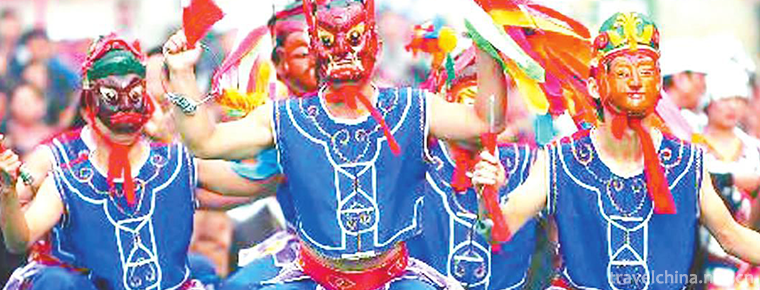
-
Cattle back MountainNiubeishan Mountain
Niubei Mountain is located in the border of Xingjing County and Luding County in Ya'an City.
Views: 171 Time 2018-10-13 -
Mingyue Mountain
Mingyue Mountain: National tourist resorts, National Scenic spots, national AAAAA tourist attractions, National Forest parks, national geological parks, National Natural heritage, home of hot springs .
Views: 215 Time 2018-12-08 -
Zhongshan Park
Zhongshan Park is located in the south of the Forbidden City (Palace Museum) in the center of Beijing, west of Tian'anmen, and separated from the Palace Museum..
Views: 117 Time 2018-12-22 -
Miao embroidery
Miao embroidery refers to the embroidery skills inherited by the Miao people in China. Miao embroidery in Leishan County, Guiyang City and Jianhe County of Guizhou Province has different forms and sty.
Views: 138 Time 2019-06-05 -
Naton Festival of the Turkish Nationality
Naton is a temple fair where the Tu people in Sanchuan area of Minhe County, Qinghai Province perform Nuo Dance (the first dance) and Nuo Opera (the mask dance) in order to dispel diseases and calamit.
Views: 252 Time 2019-06-23 -
Henan Opera
Henan Opera, originating in the Central Plains (Henan), is one of the five major Chinese operas and the largest local opera in China. Contemporary Henan Opera has followed Henan Satellite TV, Henan He.
Views: 223 Time 2019-07-16 -
Brocade Weaving Skills of the Zhuang Nationality
After thousands of years of development, the brocade has its own system of three categories, more than 20 varieties and more than 50 patterns. It is famous for its durability, exquisite skills, unique.
Views: 200 Time 2019-08-16 -
Cao Hong
Cao Hong(? - two hundred and thirty two). Pei Guo Qiao (now Anhui) Bozhou People. Emperor Wei and Emperor Wei of the late Han Dynasty and the Three Kingdoms period Cao Cao From brother..
Views: 204 Time 2019-09-15 -
Jiajinshan National Forest Park
Xiaojin County of jiajinshan National Forest Park is located at the northern foot of Jiajin mountain in the east of Xiaojin County, Aba Tibetan and Qiang Autonomous Prefecture, Sichuan Province. .
Views: 320 Time 2020-11-07 -
Chinese Cheongsam QiPao start time
When it comes to the beginning of cheongsam fashion, it is generally believed that in the period of the Republic of China in the 20th century, Mr. Zheng Yimei said that "the original women wore short clothes in the Qing Dynasty, but did not wear .
Views: 363 Time 2020-12-11 -
Flag dress of Qing Dynasty
In the strong feudal ethical atmosphere of the Qing Dynasty, it is impossible for women to show their curves as modern. In the Qing Dynasty, the cutting system of flag dress always adopted straight line, and the chest, shoulder, waist and buttocks were .
Views: 65 Time 2020-12-11


